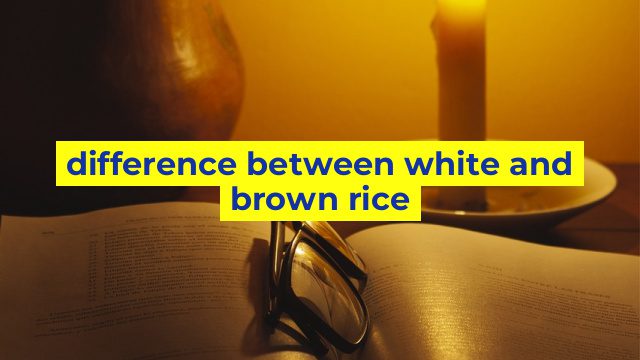The Nutritional Difference Between White and Brown Rice
Introduction
Rice is one of the most commonly consumed grains worldwide. As a staple food, it is an essential ingredient in many cultural dishes around the world. Rice can be found in various forms, including long-grain, short-grain, and wild varieties. Two of the most popular forms of rice are white and brown rice.
What is White Rice?
White rice is the most commonly consumed form of rice worldwide, and it is produced by removing the outer layer, bran, and germ of the rice kernel. This process strips away many of the nutrients and fiber present in the outer layer, leaving behind mostly starch.
What is Brown Rice?
Brown rice is a healthier alternative to white rice as it retains the outer layers of the rice kernel, bran, and germ, making it more nutrient-dense than white rice. It is an excellent source of complex carbohydrates, fiber, vitamins, and minerals, making it ideal for people looking to eat healthier.
Nutritional Differences
The main difference between brown and white rice is the nutritional content. Brown rice contains more fiber, minerals, and vitamins than white rice. Brown rice is an excellent source of magnesium, phosphorus, selenium, and niacin. These nutrients are essential for several bodily functions, including bone health, metabolism, and blood sugar regulation.
On the other hand, white rice is considered a significant source of empty calories as most of its nutritional content has been removed. It contains fewer vitamins, minerals, and fiber when compared to brown rice.
Conclusion
In conclusion, the nutritional difference between white and brown rice is significant. Brown rice is a more nutrient-dense option that provides more health benefits than white rice. However, both forms of rice can be part of a healthy diet when consumed in moderation. Consider swapping white rice for brown rice to reap the health benefits and add some variety to your meals.
Table difference between white and brown rice
| White Rice | Brown Rice | |
|---|---|---|
| Color | White | Brown |
| Processing | Polished, outer bran and germ layers removed | Unpolished, only outermost hull removed |
| Nutritional Value | Lower in fiber and nutrients; higher glycemic index (GI) | Higher in fiber, vitamins, and minerals; lower GI |
| Cooking Time | Shorter | Longer |
| Taste and Texture | Light and fluffy texture with a mild, slightly sweet taste | Nutty flavor and chewy texture |
| Common Uses | Sushi, stir-fry, risotto | Salads, pilafs, casseroles |

